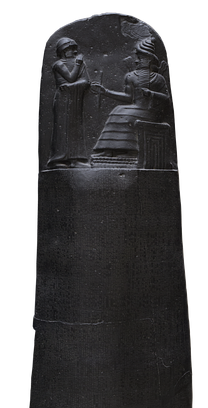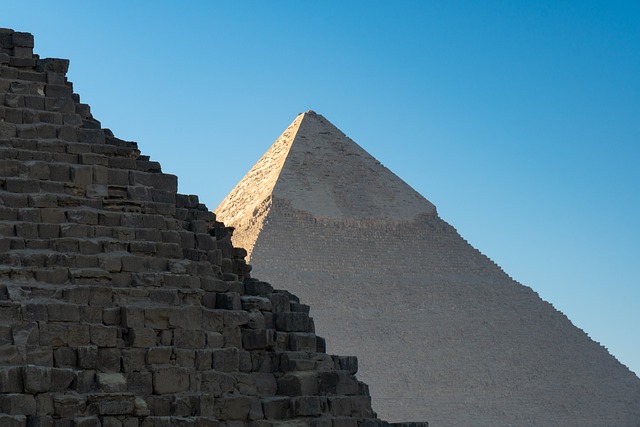
Ancient Egypt, one of the most enduring and fascinating civilizations in human history, left behind a rich tapestry of customs, routines, and social structures that continue to captivate scholars and enthusiasts alike. Daily life in ancient Egypt was deeply intertwined with religion, tradition, and the natural rhythms of the Nile River.
Social Structures
1. Pharaoh and Elite Class
In the ancient world, the Egyptian pharaoh stood without equal, and his power over the earth was like that of a god. He was surrounded by the nobles, priests and nobles who formed the basis of Egyptian society. Together they performed a spectacular dance of power, wealth and influence that defined life on the banks of the Nile.
The Pharaoh: Divine Ruler and Earthly Sovereign
Pharaoh was not only a mortal king but a living god, a figure of divine sovereignty and cosmic order. Regarded as the “son of Ra,” his earthly manifestation of Horus, the eagle-headed god of kings and skies, Pharaoh’s rule was sacred and laws lawful, and his will absolute.
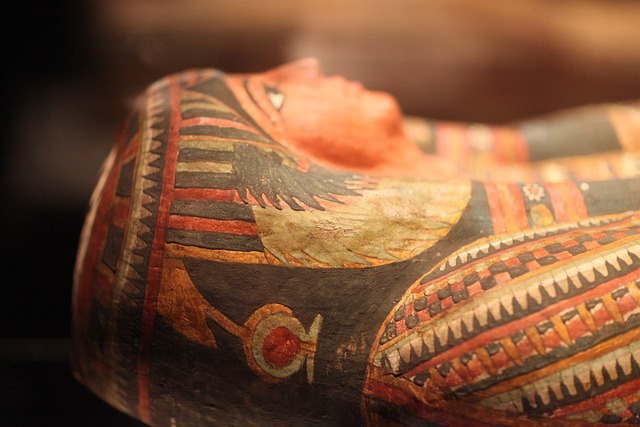
Pharaoh’s presence permeated every aspect of Egyptian life, from the magnificent palaces of Memphis to the magnificent temples of Thebes. His power extended to matters of state and religion, war and peace, life and death. He commanded the army and administered justice and directed the workers who built the great structures that inspire awe even today.
The Elite Class: Pillars of Power and Prestige
Beneath the pharaoh were the nobles of society, whose destiny was connected with that of the state, a hierarchy of nobles and priests These men held influence and power commensurate with their status, and their functions were of great importance for the role of the state.
Noblemen with hereditary titles and large estates stood as stewards of the land, overseeing its cultivation, and harvesting its wealth, surrounded by magnificent palaces of splendor and luxury.
The priests, the custodians of the sacred ritual mysteries, ruled the hearts and minds of the masses. Their rituals appeased the gods, made the earth fertile, and nourished the cosmic order on which the universe depended.
Officials skilled in administrative and diplomatic skills ruled provinces, collected taxes, and administered justice in the name of Pharaoh They navigated the treacherous streams of court politics as they vied for favor and prestige in the corridors of power.
Legacy and Endurance
The Pharaoh and the elite class bequeathed to posterity a legacy of grandeur and splendor, their achievements etched in stone and written upon papyrus. Their patronage fueled the flourishing of art, architecture, and literature, leaving behind a cultural legacy that continues to inspire wonder and admiration.
Yet, their rule was not without its contradictions and complexities. Beneath the veneer of divine authority lay the realities of human frailty and ambition, of power struggles and rivalries that could shake the very foundations of the kingdom.
In the annals of history, the Pharaoh and the elite class stand as testament to the enduring allure of ancient Egypt, a civilization that rose and fell along the banks of the Nile. Their stories echo through the ages, a testament to the indomitable spirit of a people who sought to harness the forces of nature and the divine in their quest for immortality.
2. Priests and Priestesses
In the intricate tapestry of ancient Egyptian society, priests and priestesses held a sacred and pivotal role, serving as intermediaries between the mortal realm and the divine. Their duties extended far beyond mere ritualistic performances; they were custodians of tradition, guardians of sacred knowledge, and stewards of cosmic order. Let us delve deeper into the lives and responsibilities of these revered figures.
Guardians of Sacred Mysteries:
Priests and priestesses were entrusted with the solemn responsibility of maintaining the sacred rites and rituals that sustained the cosmic balance of the universe. They presided over ceremonies that honored the gods, appeased the spirits of the departed, and ensured the prosperity of the kingdom. From the grand temples of Karnak to the humble shrines of village communities, their presence sanctified every aspect of Egyptian life.
Keepers of Divine Wisdom:
At the heart of their vocation lay the pursuit of divine wisdom and spiritual enlightenment. Priests and priestesses devoted themselves to the study of ancient texts, the deciphering of hieroglyphic inscriptions, and the contemplation of esoteric mysteries. They delved into the depths of the soul, seeking communion with the gods and enlightenment beyond the veil of mortality.
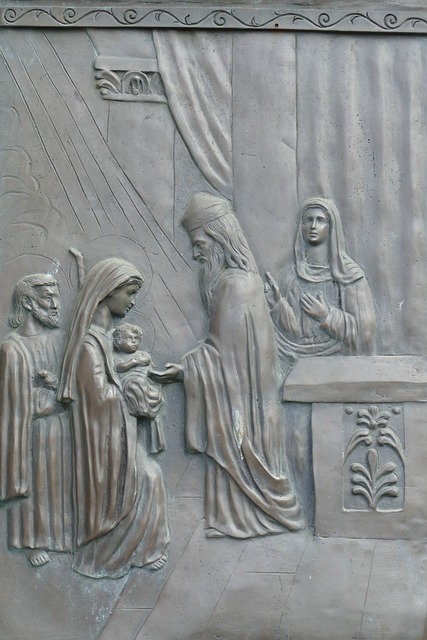
Intercessors and Healers:
In times of joy and sorrow, abundance and scarcity, the people turned to the priests and priestesses for guidance and solace. As intermediaries between the earthly realm and the divine, they offered prayers and invocations on behalf of the community, beseeching the gods for blessings and protection. In times of illness or affliction, they invoked the healing powers of the gods, administering sacred remedies and incantations to restore health and vitality.
Stewards of Temples and Treasures:
The temples, with their towering pylons and sprawling courtyards, served as the spiritual and cultural epicenters of Egyptian society. Priests and priestesses were entrusted with the care and maintenance of these sacred precincts, ensuring that the fires of devotion never waned. They tended to the sacred images, performed the rituals of purification, and safeguarded the treasures of the gods from profane hands.
Symbols of Divine Authority:
In their resplendent vestments and ceremonial regalia, priests and priestesses embodied the majesty and splendor of the divine. Adorned with amulets, ankhs, and sacred symbols, they stood as living embodiments of cosmic order and harmony. Their words carried the weight of prophecy, their actions guided by the wisdom of ages past.
Conclusion:
In the annals of Egyptian history, the names of priests and priestesses echo through the corridors of time, their deeds inscribed upon the tablets of eternity. They were the custodians of tradition, the guardians of sacred mysteries, and the harbingers of divine grace. In a world shaped by the interplay of gods and mortals, they stood as pillars of strength and symbols of hope, their legacy enduring long after the sands of time have shifted.
3. Scribes
In the grand tapestry of ancient Egyptian civilization, scribes occupied a position of immense importance and reverence. Their role transcended mere penmanship; they were the custodians of knowledge, the architects of bureaucracy, and the guardians of tradition. Let us explore the multifaceted world of scribes in ancient Egypt.
Keepers of the Written Word:
At the heart of their vocation lay the sacred duty of recording and preserving the accumulated wisdom of the ages. Scribes meticulously transcribed religious texts, historical chronicles, legal codes, and administrative documents onto papyrus scrolls or inscribed them onto temple walls. Through their painstaking efforts, the oral traditions of Egypt were immortalized in written form, ensuring their transmission to future generations.
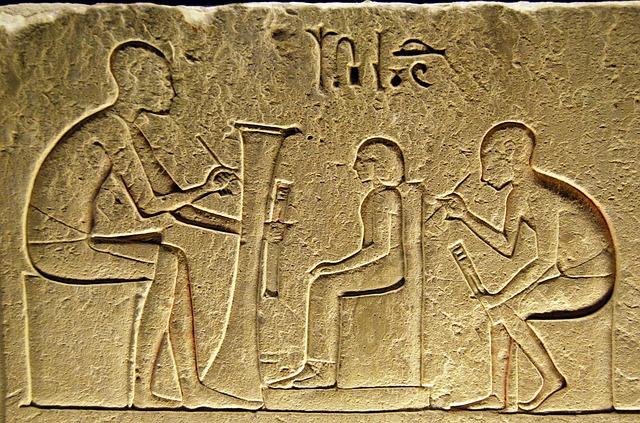
Guardians of Administrative Order:
In a civilization as complex and hierarchical as ancient Egypt, the maintenance of administrative order was paramount to its stability and prosperity. Scribes served as the indispensable architects of bureaucracy, overseeing the collection of taxes, the allocation of resources, and the adjudication of disputes. They meticulously recorded the transactions of commerce, the distributions of land, and the decrees of Pharaohs, thereby ensuring the smooth functioning of the state.
Arbiters of Justice:
In the halls of justice, scribes wielded the power of the written word as a tool for equity and fairness. They meticulously documented legal proceedings, recorded the testimonies of witnesses, and transcribed the judgments of magistrates. Their impartiality and attention to detail ensured that justice was dispensed with clarity and integrity, thereby upholding the social order and preserving the rights of the citizenry.
Educators and Mentors:
Scribes were not merely passive transcribers of knowledge; they were also revered educators and mentors who imparted their wisdom to the next generation. In the hallowed halls of scribal schools, aspiring students learned the intricacies of hieroglyphic script, the principles of mathematics, and the nuances of religious doctrine. Under the tutelage of master scribes, they honed their skills in the pursuit of excellence and enlightenment.
Symbols of Prestige and Honor:
In a society where literacy was a rare and coveted skill, scribes occupied a position of prestige and honor. Adorned in the garb of their profession, with reed pens tucked behind their ears and papyrus scrolls at their sides, they were revered as custodians of civilization itself. Their names were inscribed upon monuments, their achievements celebrated in art and literature, their counsel sought by rulers and commoners alike.
Conclusion:
In the annals of Egyptian history, the legacy of scribes endures as a testament to the enduring power of knowledge and the written word. Through their labor and dedication, the stories of Egypt were immortalized, its laws codified, and its wisdom preserved for eternity. In a world shaped by the flux of time and the caprices of fate, they stood as beacons of enlightenment, guiding humanity towards the light of understanding and the promise of a brighter tomorrow.
4. Artisans and Craftsmen
In the vibrant civilization of ancient Egypt, artisans and craftsmen occupied a central and esteemed position within society. Their creative talents and skilled craftsmanship enriched every aspect of daily life, from the grandeur of monumental architecture to the intricacies of personal adornment. Let us delve into the world of artisans and craftsmen in ancient Egypt.
Masters of Their Craft:
Artisans and craftsmen were revered for their mastery of various disciplines, including sculpture, painting, pottery, metalworking, jewelry making, and textile production. Passed down through generations, their techniques and expertise were honed over years of meticulous practice and innovation.
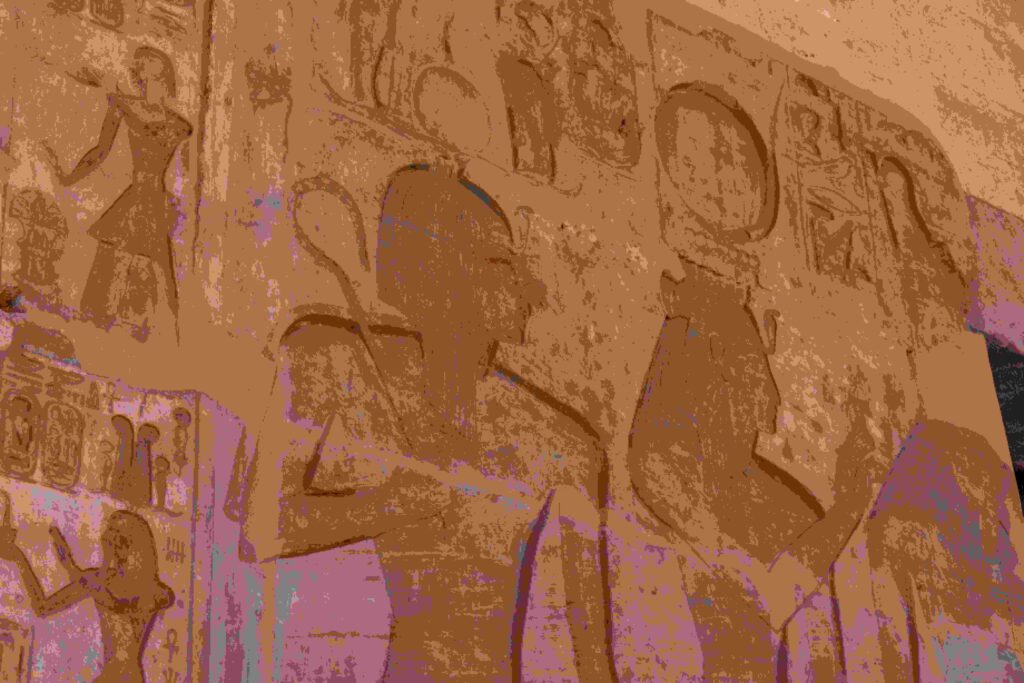
Creators of Beauty and Utility:
From the soaring obelisks of Karnak to the exquisite jewelry adorning the noble elite, artisans and craftsmen infused their creations with beauty, symbolism, and functionality. They transformed raw materials such as limestone, granite, precious metals, and gemstones into objects of enduring splendor and significance.
Guardians of Tradition and Symbolism:
In a society steeped in tradition and symbolism, artisans and craftsmen played a vital role in preserving and perpetuating cultural motifs and religious iconography. Their creations adorned the walls of temples, adorned the sarcophagi of the deceased, and embellished the sacred vessels used in ritual ceremonies. Each design and motif held deep significance, conveying messages of devotion, protection, and transcendence.
Collaborators and Innovators:
Artisans and craftsmen often collaborated closely with architects, priests, and nobles to bring their visions to life. They participated in the planning and construction of monumental structures, such as temples, tombs, and palaces, contributing their expertise to every phase of the creative process. Through collaboration and innovation, they pushed the boundaries of artistic expression, pioneering new techniques and styles that would influence generations to come.
Symbols of Status and Prestige:
In a society where status and prestige were highly prized, artisans and craftsmen occupied a position of respect and admiration. Their skills were in high demand among the elite, who commissioned them to create personalized works of art and luxury goods. From intricately carved furniture to exquisitely painted pottery, their creations adorned the homes and palaces of the wealthy, serving as symbols of wealth, taste, and refinement.
Legacy and Endurance:
The legacy of ancient Egyptian artisans and craftsmen endures as a testament to the enduring power of human creativity and ingenuity. Their works of art continue to inspire wonder and awe, offering glimpses into a world of beauty, mystery, and spiritual reverence. In a civilization defined by its reverence for the past and its aspirations for the future, they stand as guardians of tradition, custodians of culture, and architects of immortality.
5. Farmers and Laborers
In the ancient civilization of Egypt, farmers and laborers formed the backbone of society, their toil sustaining the kingdom’s prosperity and ensuring its survival. From the fertile banks of the Nile to the bustling streets of its cities, their labor shaped the very fabric of daily life. Let us explore the vital roles and enduring contributions of farmers and laborers in ancient Egypt.
Cultivators of the Land:
Farmers in ancient Egypt were the stewards of the land, harnessing the life-giving waters of the Nile to cultivate crops and sustain communities. Through the ancient practice of irrigation, they channeled the river’s waters onto the fields, nourishing the fertile soil and coaxing forth abundant harvests of wheat, barley, flax, and vegetables. Their knowledge of seasonal cycles and agricultural techniques ensured the kingdom’s food security and economic prosperity.

Guardians of the Nile:
The annual flooding of the Nile was both a blessing and a curse, bringing life-giving waters and fertile silt to the land, but also threatening destruction and devastation. Farmers worked tirelessly to manage the floodwaters, constructing dikes, canals, and reservoirs to regulate their flow and protect their fields from inundation. Their collective efforts transformed the river’s capricious floods into a source of abundance and renewal, ensuring the kingdom’s survival for generations to come.
Builders of Civilization:
Laborers in ancient Egypt were the architects of civilization, their hands shaping the monumental structures and enduring monuments that still grace the landscape today. From the towering pyramids of Giza to the majestic temples of Luxor, their labor and ingenuity transformed raw materials into works of enduring beauty and cultural significance. Working under the direction of skilled craftsmen and overseers, they quarried stone, carved statues, and erected colossi that would stand as testaments to the kingdom’s greatness for millennia to come.
Providers of Essential Services:
In addition to their roles in agriculture and construction, laborers in ancient Egypt provided essential services that sustained the kingdom’s infrastructure and facilitated its commerce. They worked as porters, ferry operators, and boatmen, transporting goods and people along the river’s waterways and connecting distant communities with the bustling markets of the cities. Their labor kept the wheels of commerce turning, ensuring the flow of goods and resources that fueled the kingdom’s economy and enriched its culture.
Symbols of Resilience and Endurance:
In a world shaped by the forces of nature and the exigencies of fate, farmers and laborers in ancient Egypt embodied the virtues of resilience, perseverance, and solidarity. Their labor sustained the kingdom through times of plenty and times of want, ensuring the continuity of life and the preservation of civilization against the ravages of time and the uncertainties of the natural world. In their hands lay the fate of the kingdom, their toil a testament to the enduring spirit of human endeavor and the indomitable will to thrive against all odds.
6. Slaves
The institution of slavery was a significant aspect of ancient Egyptian society, although its nature and prevalence varied over time and depended on social, economic, and political factors. Slaves in ancient Egypt were individuals who were deprived of their freedom and forced to perform labor or serve their masters without compensation. While some slaves were captives of war, others were born into slavery or sold into servitude due to debt or poverty.
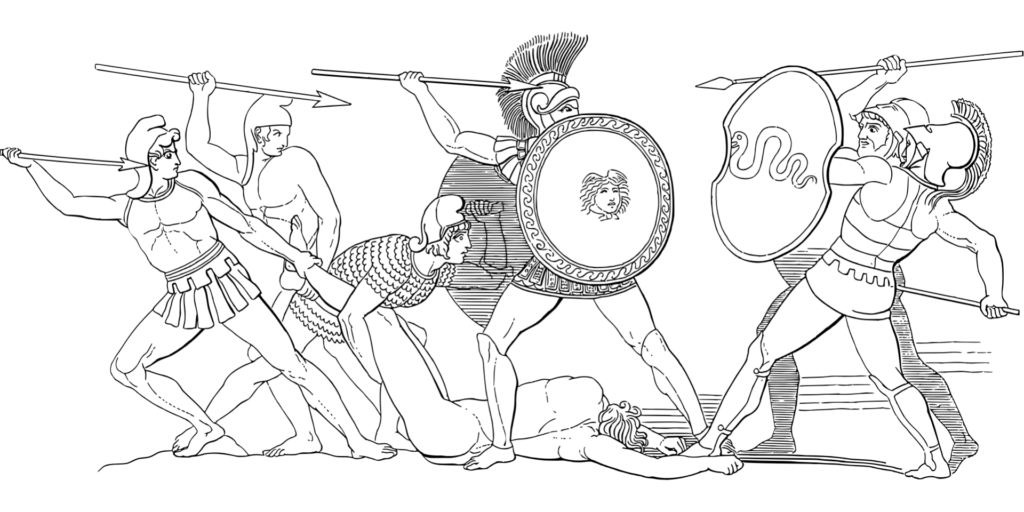
Origins and Acquisition:
Slaves in ancient Egypt came from diverse backgrounds and were acquired through various means. Many were prisoners of war captured during military campaigns, while others were individuals who sold themselves or their children into slavery to alleviate debt or poverty. Additionally, some slaves were acquired through trade or as gifts from foreign rulers seeking to curry favor with the Egyptian elite.
Roles and Responsibilities:
Slaves in ancient Egypt performed a wide range of tasks and occupations, depending on their skills, abilities, and the needs of their masters. Some worked as household servants, performing domestic chores such as cooking, cleaning, and childcare. Others toiled in agricultural fields, tending crops, and livestock under the supervision of overseers. Skilled slaves might be employed in construction projects, mining operations, or as artisans and craftsmen, contributing their labor to the building of monumental structures and the production of goods for trade and consumption.
Legal and Social Status:
While slaves in ancient Egypt lacked personal freedom and autonomy, they were afforded certain legal protections and rights under Egyptian law. They could own personal property, enter into contracts, and marry with the consent of their masters. However, their rights were limited, and they were subject to the authority and whims of their owners, who held absolute power over their lives and livelihoods.
Treatment and Conditions:
The treatment of slaves in ancient Egypt varied widely depending on their individual circumstances and the disposition of their masters. While some slaves enjoyed relatively favorable conditions and opportunities for advancement, others endured harsh treatment, abuse, and exploitation. Working conditions could be grueling, especially for those engaged in agricultural or industrial labor, where physical exertion and exposure to the elements were commonplace.
Legacy and Impact:
The legacy of slavery in ancient Egypt is a complex and contentious issue, reflecting the complexities of power, hierarchy, and social stratification inherent in human societies throughout history. While slavery played a significant role in the economy and labor force of ancient Egypt, its precise impact on society and culture remains a subject of debate among scholars and historians. As with many aspects of ancient history, our understanding of slavery in ancient Egypt continues to evolve as new archaeological discoveries and scholarly research shed light on this important yet often overlooked aspect of human civilization.
Routines and Customs
1. Religious Observances
Religious observances formed the cornerstone of daily life in ancient Egypt, permeating every aspect of society and shaping the beliefs, behaviors, and rituals of its people. With a pantheon of gods and goddesses numbering in the hundreds, each associated with specific domains of life and the natural world, religion in ancient Egypt was a complex and multifaceted system that offered guidance, solace, and meaning to its adherents.
Worship and Devotion:
Central to religious observances in ancient Egypt was the practice of worship, through which individuals and communities expressed reverence and devotion to the gods. Temples served as sacred spaces where rituals, ceremonies, and offerings were conducted by priests and priestesses on behalf of the populace. These rituals ranged from simple prayers and hymns to elaborate processions, festivals, and sacrifices, designed to honor and appease the deities and ensure their favor and protection.
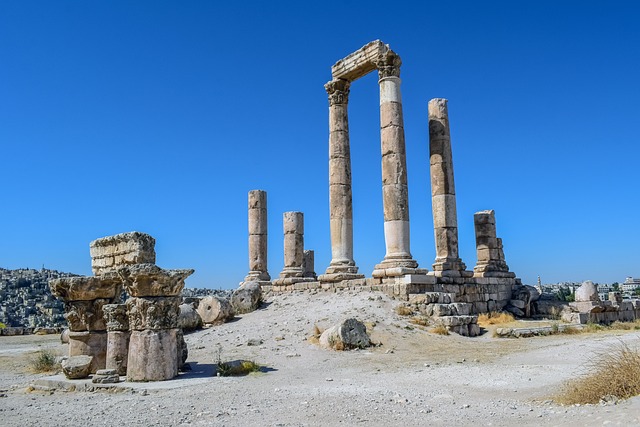
Festivals and Celebrations:
Throughout the year, the ancient Egyptians celebrated a myriad of festivals and religious observances that marked the cyclical rhythms of nature, the agricultural calendar, and significant events in the royal and religious calendar. Festivals such as the Opet Festival, the Festival of the Valley, and the Feast of Wepet Renpet (New Year) brought communities together in joyous celebration, feasting, music, dance, and religious processions that honored the gods and reaffirmed the bonds of community and tradition.
Offerings and Sacrifices:
Offerings and sacrifices played a central role in religious observances, serving as tangible expressions of gratitude, piety, and devotion to the gods. Offerings ranged from simple offerings of bread, beer, fruits, and vegetables to more elaborate offerings of precious metals, jewelry, and livestock. Sacrificial rituals, in which animals were ritually slaughtered and offered to the gods, were believed to appease divine wrath, cleanse impurities, and ensure the renewal of life and fertility.
Ritual Purity and Purification:
In the ancient Egyptian worldview, ritual purity was of paramount importance, as it was believed to facilitate communion with the divine and ward off malevolent forces. Rituals of purification, including ablutions, anointings, and fumigations, were performed by priests and individuals alike to cleanse the body, mind, and spirit of impurities and sin. Sacred oils, perfumes, and incense were used to sanctify temples, ritual objects, and sacred spaces, creating an atmosphere of holiness and divine presence.
Communion with the Divine:
For the ancient Egyptians, religious observances were not merely outward rituals but opportunities for communion with the divine, wherein mortal and immortal realms intersected and merged. Through prayer, meditation, and contemplation, individuals sought to establish a personal connection with the gods, seeking guidance, protection, and blessings in their daily lives. Dreams, visions, and oracles were believed to be channels through which the gods communicated their will and intentions to humanity, offering insights into the mysteries of existence and the afterlife.
Conclusion:
In the vast tapestry of ancient Egyptian civilization, religious observances served as the spiritual bedrock upon which society was built, providing guidance, solace, and meaning to its people. Through worship, festivals, offerings, and rituals of purification, the ancient Egyptians sought to honor the gods, maintain cosmic order, and ensure the continuity of life and prosperity for themselves and future generations. In the enduring legacy of their religious beliefs and practices, we glimpse the timeless quest for transcendence, meaning, and connection that binds humanity across the ages.
2. Work and Daily Tasks
In ancient Egypt, daily life revolved around a variety of tasks and occupations, each essential to the functioning of society and the maintenance of daily life. From the bustling cities along the Nile to the rural villages in the countryside, individuals engaged in a wide range of activities that sustained their communities and ensured their well-being. Let’s explore the diverse array of work and daily tasks in ancient Egyptian society:

- Agriculture and Farming:
Agriculture formed the backbone of ancient Egyptian society, with the fertile banks of the Nile River providing the ideal conditions for farming.
Farmers cultivated crops such as wheat, barley, flax, vegetables, and fruits using irrigation techniques to harness the waters of the Nile.
The agricultural cycle, dictated by the annual flooding of the Nile, involved planting, tending, and harvesting crops in accordance with the seasons.
- Fishing and Hunting:
The Nile River and its abundant marshes and waterways provided rich fishing grounds where fishermen caught a variety of fish, including catfish, tilapia, and perch.
Hunters ventured into the marshes and deserts to hunt wild game such as waterfowl, antelope, and gazelle, supplementing the diet with meat and other animal products.
- Craftsmanship and Artistry:
Skilled artisans and craftsmen played a crucial role in ancient Egyptian society, producing a wide range of goods including pottery, jewelry, textiles, furniture, and tools.
Craftsmen worked in specialized workshops, using techniques such as carving, weaving, casting, and painting to create intricate and beautiful objects that adorned homes, temples, and tombs.
- Construction and Building:
Construction projects were a constant feature of ancient Egyptian life, with laborers and artisans building temples, palaces, tombs, canals, and other infrastructure projects.
Workers quarried stone, transported building materials, and erected massive structures using simple tools and techniques passed down through generations.
- Trade and Commerce:
Trade played a vital role in ancient Egyptian society, facilitating the exchange of goods and commodities both within the kingdom and with neighboring regions.
Merchants traveled along river routes and overland trade routes, exchanging goods such as grain, gold, ivory, incense, and exotic goods with distant lands.
- Administration and Bureaucracy:
A complex system of administration and bureaucracy governed ancient Egyptian society, with scribes and officials overseeing taxation, justice, land management, and other governmental functions.
Scribes recorded transactions, maintained records, and drafted correspondence, while government officials administered justice, collected taxes, and enforced the Pharaoh’s decrees.
- Domestic and Household Duties:
Within the home, individuals engaged in a variety of domestic tasks such as cooking, cleaning, childcare, and tending to family members and livestock.
Women played a central role in managing household affairs, overseeing domestic activities and ensuring the well-being of their families.
- Conclusion:
In ancient Egypt, work and daily tasks were not just means of survival but integral components of a complex and interconnected social and economic system. From the fields of the countryside to the bustling markets of the cities, individuals labored tirelessly to sustain their communities, uphold cultural traditions, and ensure the prosperity of future generations. Through their efforts, they built a civilization that thrived for millennia, leaving behind a legacy of ingenuity, resilience, and enduring cultural richness.
3. Family and Community
In ancient Egypt, family and community formed the bedrock of social structure and cohesion, providing individuals with a sense of identity, belonging, and support that permeated every aspect of daily life. From the intimate bonds of kinship to the broader networks of community and society, relationships were valued, nurtured, and celebrated as vital threads in the fabric of Egyptian culture.
- Importance of Family:
Family was central to ancient Egyptian society, serving as the primary unit of social organization and support.
The nuclear family typically consisted of parents and their children, although extended families often lived together under one roof, fostering close bonds and intergenerational relationships.
Family ties were sacred and enduring, with filial piety and respect for elders upheld as cherished virtues.
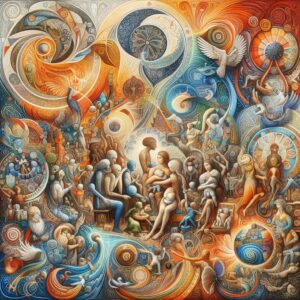
- Roles and Responsibilities:
Within the family structure, each member had distinct roles and responsibilities based on age, gender, and social status.
Men were typically responsible for providing for the family economically, working in agriculture, crafts, trade, or administration.
Women managed the household, cared for children, and often participated in economic activities such as weaving, brewing, or selling goods at markets.
- Marriages and Relationships:
Marriage was an important institution in ancient Egypt, cementing alliances between families, consolidating wealth and property, and ensuring the continuity of lineage.
Marriages were often arranged by families, with considerations given to social status, wealth, and compatibility.
While monogamous marriages were common, polygamy was also practiced among the elite, particularly among pharaohs and nobles.
- Community Bonds:
Beyond the family, ancient Egyptians were deeply connected to their broader communities, which encompassed neighborhoods, villages, and towns.
Communities provided mutual support, shared resources, and collective security, fostering a sense of solidarity and cooperation among its members.
Festivals, religious ceremonies, and communal gatherings offered opportunities for socializing, strengthening bonds, and affirming cultural identity.
- Religious and Spiritual Practices:
Religion played a significant role in shaping familial and communal life in ancient Egypt, providing a framework of beliefs, rituals, and traditions that bound individuals together.
Families participated in religious observances, offering prayers, sacrifices, and offerings to honor the gods and ensure divine protection.
Temples and shrines served as focal points for communal worship and spiritual guidance, bringing together individuals from diverse backgrounds in acts of devotion and reverence.
- Care for the Elderly and Children:
In ancient Egypt, respect for elders and care for the young were paramount values upheld by society.
Elders were revered for their wisdom and experience, often serving as sources of guidance and authority within the family and community.
Children were cherished and nurtured, with parents and extended family members providing love, education, and support to ensure their well-being and future success.
- Conclusion:
In ancient Egypt, the bonds of family and community were not just social constructs but foundational elements of identity, belonging, and mutual support. Through shared rituals, traditions, and experiences, individuals found meaning, purpose, and connection in the company of loved ones and the embrace of their communities. Across the ages, the enduring legacy of Egyptian society serves as a testament to the enduring power of familial bonds and communal ties in shaping the human experience.
4. Education and Learning
Education and learning held significant importance in ancient Egypt, shaping the intellectual, cultural, and social development of its people. The educational system was structured to impart essential skills, knowledge, and values that prepared individuals for their roles within society and facilitated the transmission of cultural heritage across generations.

- Scribal Education:
Scribal education was highly esteemed in ancient Egypt, as literacy and proficiency in writing were essential for administrative, religious, and scholarly pursuits.
Scribal schools, known as “House of Life,” provided formal education to aspiring scribes, teaching them the intricacies of hieroglyphic writing, mathematics, accounting, and literature.
Students learned to read and write by copying texts, memorizing religious hymns, and practicing mathematical calculations on papyrus scrolls.
- Practical Skills and Vocational Training:
In addition to scribal education, vocational training was also crucial for preparing individuals for careers in various trades and professions.
Apprenticeships were common in occupations such as carpentry, masonry, metalworking, pottery, weaving, and agriculture, where skills were passed down from master to apprentice through hands-on experience and observation.
Practical skills were honed through trial and error, with apprentices gradually mastering techniques and gaining proficiency in their chosen craft.
- Religious Instruction:
Religious education played a central role in ancient Egyptian society, as religious beliefs permeated every aspect of daily life.
Priests and priestesses served as instructors in religious matters, teaching students about the gods, rituals, myths, and moral principles that guided Egyptian society.
Temple schools provided instruction in religious texts, hymns, and rituals, preparing students for roles within the priesthood or as devout members of the community.
- Moral and Ethical Education:
Education in ancient Egypt also emphasized moral and ethical values that were integral to maintaining social harmony and order.
Students were taught virtues such as honesty, integrity, humility, and respect for authority, which were essential for navigating interpersonal relationships and upholding societal norms.
Moral instruction was often intertwined with religious teachings, as ethical behavior was seen as a reflection of one’s devotion to the gods and commitment to ma’at, the principle of cosmic balance and order.
- Informal Learning and Family Education:
Not all education in ancient Egypt took place within formal institutions or structured settings.
Much learning occurred informally within the family and community, as parents, elders, and community members imparted practical knowledge, cultural traditions, and life lessons to younger generations through storytelling, oral traditions, and everyday experiences.
Children learned by observing and participating in family and community activities, acquiring skills and values that would guide them throughout their lives.
- Legacy and Impact:
The educational system of ancient Egypt laid the foundation for the intellectual and cultural achievements of the civilization, fostering a legacy of scholarship, innovation, and cultural continuity that endured for millennia.
Through education, individuals gained the knowledge, skills, and values necessary to contribute meaningfully to their communities, uphold cultural traditions, and advance the collective welfare of society.
In summary, education and learning were fundamental components of ancient Egyptian society, serving as pathways to personal growth, social mobility, and cultural enrichment. The educational system reflected the values, priorities, and aspirations of the civilization, providing a framework for intellectual and spiritual development that shaped the course of Egyptian history and civilization.
5. Health and Well-being
Health and well-being were paramount concerns in ancient Egypt, with the civilization developing a sophisticated understanding of medicine, hygiene, and holistic approaches to maintaining physical, mental, and spiritual health. Drawing upon a combination of empirical knowledge, religious beliefs, and practical wisdom, ancient Egyptians pursued various practices aimed at preserving well-being and treating illness.
- Medical Practices and Healing:
Ancient Egyptian medicine was characterized by a blend of empirical observation, herbal remedies, and magical incantations.
Physicians, known as “sekhmet priests,” were highly respected members of society, trained in diagnosing ailments, prescribing treatments, and performing surgical procedures such as setting broken bones and suturing wounds.
Medical texts, such as the Ebers Papyrus and the Edwin Smith Papyrus, contain detailed descriptions of diseases, symptoms, and treatment methods used by ancient Egyptian healers.
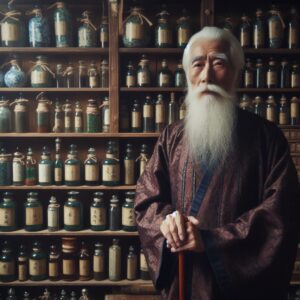
- Herbal Remedies and Natural Healing:
Herbalism played a central role in ancient Egyptian medicine, with healers utilizing a wide array of plants, minerals, and animal products to concoct remedies for various ailments.
Commonly used herbs included aloe vera, garlic, juniper, and coriander, which were believed to possess medicinal properties and therapeutic effects.
Natural substances such as honey, clay, and animal fats were also used in poultices, ointments, and salves for treating wounds, skin conditions, and respiratory ailments.
- Hygiene and Sanitation:
Hygiene and cleanliness were emphasized in ancient Egyptian society as preventative measures against disease and infection.
Individuals bathed regularly in the Nile River or in communal baths, using natron (a natural salt) and scented oils to cleanse the body and refresh the senses.
Personal grooming tools such as razors, tweezers, and cosmetics were used for grooming, hair removal, and beautification.
- Rituals and Magical Practices:
Religious beliefs played a significant role in ancient Egyptian concepts of health and healing.
Healing rituals and magical spells were performed by priests and healers to invoke the aid of gods and goddesses associated with healing, such as Imhotep, Sekhmet, and Thoth.
Amulets, charms, and protective symbols were worn or carried as talismans to ward off evil spirits, disease, and misfortune.
- Mental and Spiritual Well-being:
Ancient Egyptians recognized the interconnectedness of mind, body, and spirit, emphasizing the importance of maintaining mental and emotional balance for overall well-being.
Meditation, prayer, and religious ceremonies were practiced to cultivate inner peace, harmony, and spiritual enlightenment.
Dream interpretation and oracular divination were used to gain insight into one’s psyche, resolve inner conflicts, and seek guidance from the divine.
- Legacy and Impact:
The legacy of ancient Egyptian approaches to health and well-being endures as a testament to the ingenuity, resilience, and wisdom of the civilization.
Many of the principles and practices developed by ancient Egyptian healers continue to influence modern medicine and holistic health practices, demonstrating the enduring relevance of ancient wisdom in our quest for health, healing, and wholeness.
6. Leisure and Entertainment
Leisure and entertainment held a significant place in the lives of ancient Egyptians, providing opportunities for relaxation, socialization, and cultural enrichment amid the demands of daily life. From grand festivals and religious ceremonies to simple pastimes enjoyed at home, leisure activities reflected the diverse interests and passions of Egyptian society.
- Festivals and Religious Celebrations:
Festivals played a central role in ancient Egyptian culture, offering occasions for communal celebration, religious devotion, and cultural expression.
Major festivals such as the Opet Festival, the Feast of the Valley, and the Sed Festival honored gods and goddesses, celebrated royal authority, and reaffirmed the bonds of community.
Festivals featured processions, music, dance, feasting, and ritual performances, creating vibrant displays of color, sound, and pageantry that brought joy and meaning to participants.
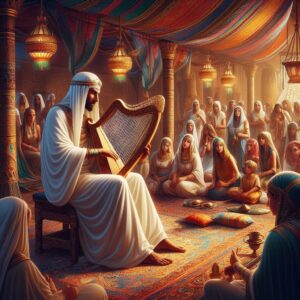
- Sporting Events and Competitions:
Sports and athletic competitions were popular forms of leisure and entertainment in ancient Egypt, enjoyed by both nobility and commoners.
Activities such as wrestling, archery, swimming, rowing, and chariot racing provided opportunities for physical fitness, skill development, and friendly competition.
Sporting events were often held in public arenas or open spaces, with spectators cheering on their favorite athletes and teams.
- Music, Dance, and Theater:
Music, dance, and theater were integral components of ancient Egyptian culture, with performances held at religious ceremonies, royal banquets, and social gatherings.
Musicians played a variety of instruments, including harps, flutes, drums, and sistrums, accompanying singers and dancers in performances that ranged from sacred hymns to lively folk dances.
Theaters and amphitheaters provided venues for dramatic performances, storytelling, and theatrical spectacles that entertained and inspired audiences.
- Games and Pastimes:
Ancient Egyptians enjoyed a variety of games and pastimes that offered opportunities for leisure and recreation.
Board games such as Senet and Mehen were popular among people of all ages, providing intellectual challenge and strategic gameplay.
Outdoor games like tug-of-war, leapfrog, and hoop rolling were enjoyed by children and adults alike, fostering camaraderie and friendly competition.
- Banquets and Social Gatherings:
Banquets and social gatherings were occasions for conviviality, hospitality, and feasting among friends, family, and neighbors.
Hosts welcomed guests into their homes with lavish spreads of food and drink, including bread, beer, wine, meats, fruits, and desserts.
Conversation, music, and storytelling flowed freely, creating an atmosphere of warmth and camaraderie that strengthened social bonds and fostered goodwill.
- Art and Creativity:
Artistic expression was a form of leisure and entertainment for ancient Egyptians, with individuals engaging in activities such as painting, sculpting, pottery-making, and jewelry crafting.
Artisans and craftsmen produced exquisite works of art and decorative objects that adorned temples, tombs, and palaces, reflecting the beauty and splendor of Egyptian civilization.
Art workshops and studios provided spaces for creativity and collaboration, where artists honed their skills and experimented with new techniques and materials.
- Conclusion:
In ancient Egypt, leisure and entertainment were integral components of daily life, providing opportunities for relaxation, enjoyment, and cultural enrichment. From grand festivals and religious ceremonies to simple pleasures enjoyed at home, leisure activities reflected the diversity and vibrancy of Egyptian society, fostering a sense of community, creativity, and well-being among its people. Through leisure and entertainment, ancient Egyptians found respite from the rigors of daily life and celebrated the richness and beauty of their civilization.
Conclusion
Ancient Egyptian society was characterized by a complex interplay of social structures, religious beliefs, and daily rituals. Despite the passage of millennia, the legacy of ancient Egypt endures, offering insights into the human experience and the enduring quest for meaning, community, and connection.

